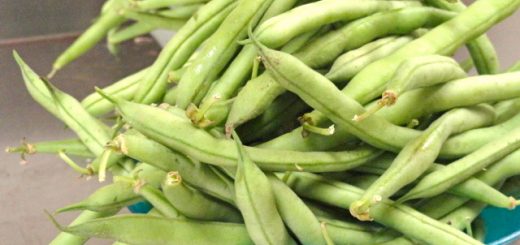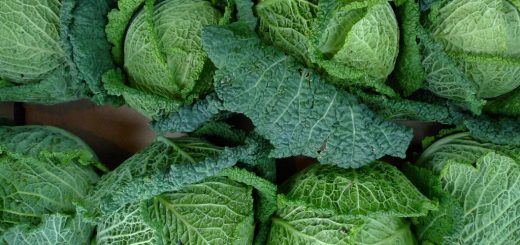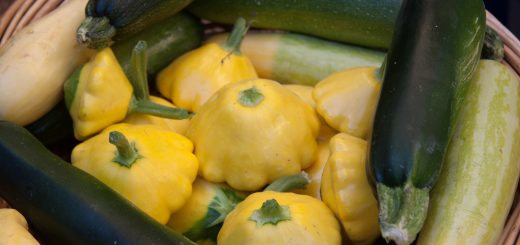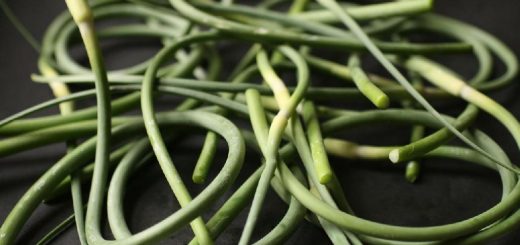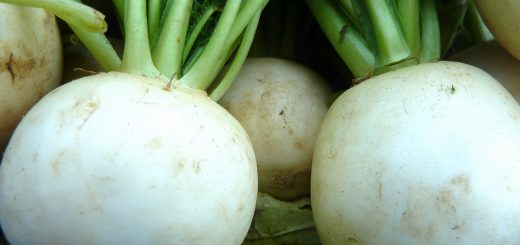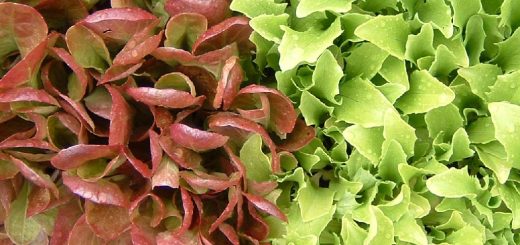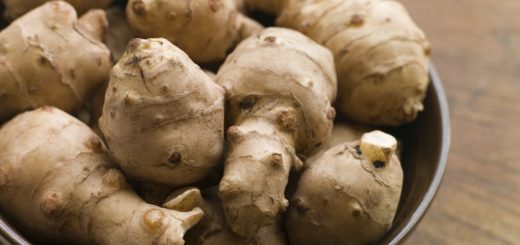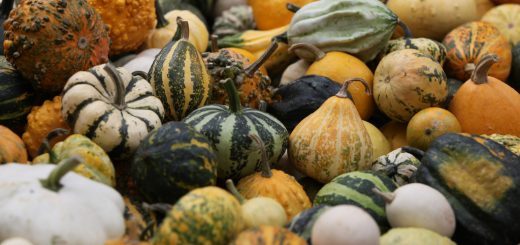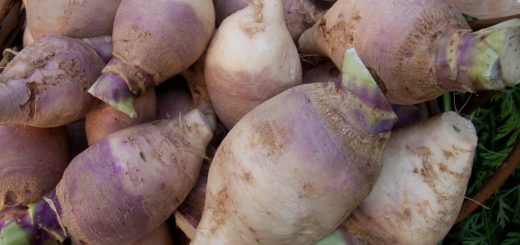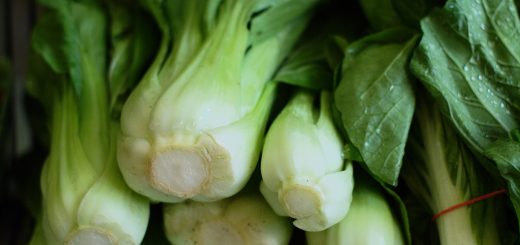Category: Featured Produce
Green beans, also known as snap beans because they “snap” when broken, are harvested when young, when the beans inside the pod are small and tender and the pods are thin. They are very low in calories and loaded with vitamins K, A, and C, fiber, folate and anti-oxidants. Interestingly, green beans were originally cultivated in Peru and were then spread throughout Central and South America by Indian tribes. Spanish explorers brought them back from the “New World” to Europe in the 16th century, and from there they spread around the world. (more…)
Cabbage is a leafy green or purple biennial plant, grown as an annual vegetable crop for its dense-leaved heads. Closely related to other cole crops, such as broccoli, cauliflower, and Brussels sprouts. Smooth-leafed firm-headed green cabbages are the most common, with smooth-leafed red and crinkle-leafed savoy cabbages of both colors seen less frequently. The cabbage heads are generally picked during the first year of the plants’ life cycles, but those intended for seed are allowed to grow a second year. (more…)
Welcome to Summer Squash season! As you may have noticed already, summer squash appears in a variety of shapes and colors, the most prevalent being the well-known green zucchini, the straight or crooked necked yellow squash, and the round, flat, often scalloped edge, patty pan squash. All these varieties are tender, warm-season vegetables that differ from their fall and winter cousins in that they are selected to be harvested while still immature. Thus, the entire vegetable, rind, flesh, and seeds, can be eaten. (more…)
For those of you familiar with the CSA, these curly beauties are a welcome friend. For those new to the CSA experience, this may be one of your first “experimental” vegetables.
(more…)
Hakurei turnips are a Japanese salad turnip. They are sweet and much softer than a regular turnip, and rarely need to be peeled; just wash and trim the root ends. The leaves are also edible but should be eaten within 1-2 days. Wrapped tightly in plastic, the turnips can be stored in the refrigerator for up to 1 week. (more…)
It is true, eating all that salad is good for you! While the nutritional value of lettuce varies with the variety, the following excerpt from the University of Illinois website sets the record straight: Lettuce in general provides small amounts of dietary fiber, some carbohydrates, a little protein and a trace of fat. Its most important nutrients are vitamin A and potassium. (more…)
Sunchokes, of the sunflower family, are native to North America where the natives called them “sun roots” before European settlers arrived. Samuel Champlain, a French explorer found them in Cape Cod in 1605 and pronounced them similar in taste to artichokes. But why “Jerusalem artichokes”? They don’t come from Jerusalem nor do they look like artichokes. There are a few theories: (more…)
Winter squash is really a misnomer, as these delicious treats are grown in the summer. They are edible well into the winter, however, thanks to their ability to last for months in storage. First, be sure to check for any soft spots. If there are any, cook that squash right away. Soft spots can easily be cut out and the rest of the squash is usually fine. (more…)
Rutabagas are only called rutabagas in the U.S. Throughout the rest of the world, they’re known as swedes. This ordinary root vegetable is thought to have originated in Bohemia in the 17th century as a hybrid between the turnip and wild cabbage.
Members of the cabbage family, rutabagas are often confused with turnips, although there are noticeable differences. Rutabagas are larger, part white and part purple, with creamy orange flesh and ribs near the stem, and with a nutty, sweet flavor when roasted. Meanwhile, turnips are white with a purple-red top and a peppery taste. (more…)
Bok Choy is technically a Chinese cabbage. But until you cook with bok choy, you cannot appreciate how special it is. It has a mellow taste compared to some of the other asian greens such as tatsoi. (more…)
